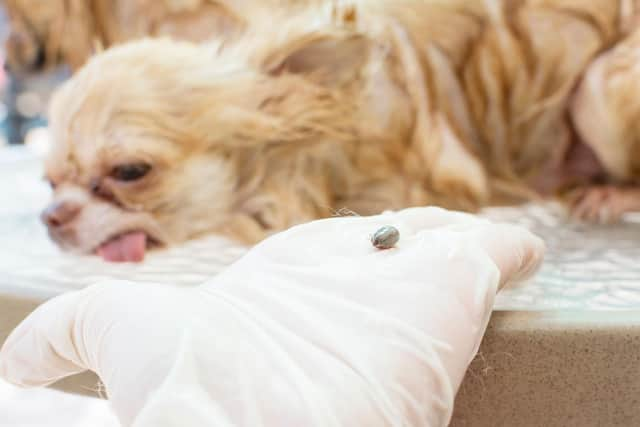Dogs and Ticks: Here are 5 expert top tips to keep your dog safe from terrible ticks this summer
This article contains affiliate links. We may earn a small commission on items purchased through this article, but that does not affect our editorial judgement.
and live on Freeview channel 276
Small but mighty, ticks can often be hard for owners to identify, however removing them prevents further adverse health effects and avoid infections and potential disease.
It is important we find ticks as early as possible as Lyme disease can affect both dogs and owners and it often hits our furry friends the worst – leading to possible kidney, heart, or neurologic problems if not treated quickly with antibiotics.
Advertisement
Hide AdAdvertisement
Hide AdTo help you out, online pet food experts Bella & Duke’s Natural Canine Behaviourist, Caroline Spencer, has a few top tips to make sure your dog doesn’t get ticked off this summer.
She explained: “With tick season upon us we may find our furry friends coming home with more than just their tennis balls. Ticks can pose a serious threat to our dogs’ health if not treated correctly and early, so it is important to be mindful of where you’re walking and to check your dog once over when home. These quick and easy steps will prevent any expensive vet bills in the long run and keep your dog happy and healthy throughout the summer season.”
Regularly check in
Always check for ticks after every walk, especially if they have been running through long grass. If you catch a tick in the first 16 hours, the chances of your pet picking up a disease is significantly reduced.
Take a closer look


When inspecting for ticks, make a point to look further than just their coat, ticks can be hiding inside your pet’s mouth, around their eyes, under their collar or between their toes. Areas where there isn’t much fur are much easier for ticks to attach themselves to.
Scope out the landscape
Advertisement
Hide AdAdvertisement
Hide AdTicks are commonly found in bushes, hedges, piles of leaves or grass, woodland and fallen branches so instead of a forest trail this summer why not opt for a walk along the beach or through your local park.
Be equipped
Ensure you have a tick key handy to remove ticks in dogs. These can be bought from any pet shop or online and are easy to use and help avoid an expensive trip to the vets. When removing a tick, make sure you don’t squeeze the tick’s body or leave the head in. If you remove a tick improperly, this can push blood back into your pet, which increases their chance of getting a disease.
Know the symptoms
If your dog is showing signs of fatigue, irregular heart beating, or gets an eye infection after being bitten by a tick it may be a symptom of Lyme disease. Be sure to take your dog to the vet straight away if you notice any of these symptoms, if you catch it early Lyme disease can be treated with antibiotics.
Read more:
Advertisement
Hide AdAdvertisement
Hide AdComment Guidelines
National World encourages reader discussion on our stories. User feedback, insights and back-and-forth exchanges add a rich layer of context to reporting. Please review our Community Guidelines before commenting.